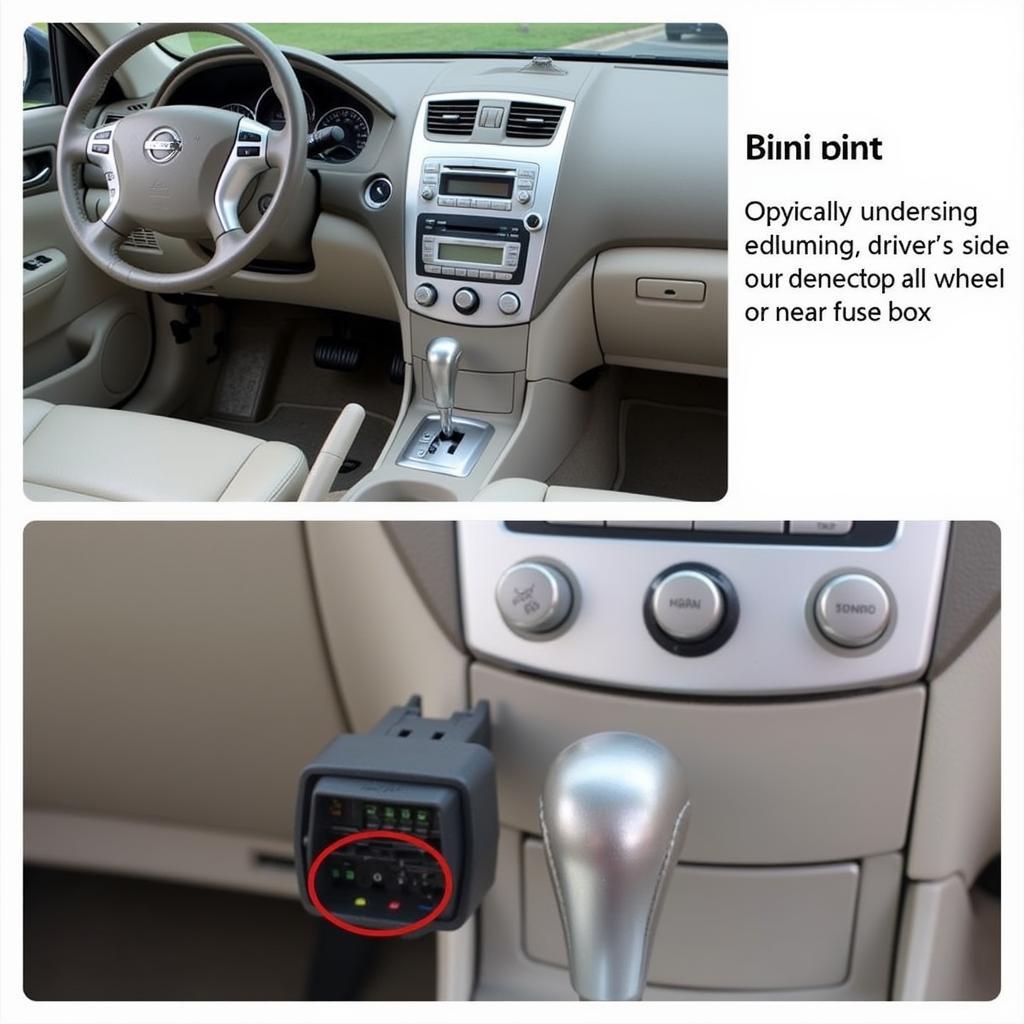In today’s automotive landscape, vehicles are becoming increasingly sophisticated, relying heavily on intricate electronic systems and components. Gone are the days when a mechanic could diagnose most car problems with a simple visual inspection and a few basic tools. The modern car demands a more advanced approach to troubleshooting, and that’s where a Computer Diagnostic Tool For Cars comes into play.
These powerful tools, also known as OBD2 scanners, have revolutionized the way car owners and mechanics approach vehicle diagnostics. They provide a window into the car’s computer system, allowing you to understand the “health” of your vehicle in a way that was unimaginable just a few decades ago.
Why is a Computer Diagnostic Tool Essential?
Modern cars are equipped with Engine Control Units (ECUs) that monitor and control various systems, from engine performance and emissions to airbag deployment and anti-lock brakes. When a problem arises, the ECU stores a diagnostic trouble code (DTC) in its memory. A car diagnostic tool allows you to access and interpret these codes, providing invaluable insights into the root cause of the issue.
[image-1|computer-diagnostic-tool-in-action|Mechanic using a computer diagnostic tool|A mechanic is shown plugging a computer diagnostic tool into a car’s OBD-II port, which is typically located under the dashboard. The tool’s screen displays diagnostic data being retrieved from the vehicle’s computer system.]
Here are some compelling reasons why a computer diagnostic tool is indispensable:
- Accurate Diagnosis: Forget about time-consuming and often inaccurate guesswork. These tools provide accurate and detailed information about the problem, saving you time and money on unnecessary repairs.
- Early Detection: A diagnostic tool can identify potential issues before they escalate into major problems, allowing you to address them proactively.
- Improved Performance: By monitoring engine parameters and identifying inefficiencies, you can optimize your car’s performance and fuel economy.
- DIY Repairs: For the automotive enthusiast, a wd diagnostic tool usb empowers you to diagnose and potentially fix some issues yourself, eliminating the need for a trip to the mechanic for every minor problem.
Choosing the Right Computer Diagnostic Tool
With a plethora of options available, choosing the right computer diagnostic tool can seem daunting. Here’s a breakdown of the types of tools available:
- Basic Code Readers: As the name suggests, these entry-level tools read and display DTCs. They are affordable and suitable for basic diagnostics.
- Advanced Scan Tools: These tools offer more comprehensive functionality, including the ability to read live data streams, perform actuator tests, and access manufacturer-specific codes.
- Professional-Grade Scanners: Used by dealerships and professional mechanics, these high-end tools offer the most advanced features, including bi-directional control, programming capabilities, and access to extensive repair databases.
[image-2|different-types-of-diagnostic-tools|Various computer diagnostic tools for cars|The image showcases three different types of computer diagnostic tools – a basic code reader, an advanced scan tool, and a professional-grade scanner. Each tool is labeled to differentiate their complexity and functionality.]
When selecting a tool, consider your budget, technical expertise, and the specific make and model of your vehicle.
What to Look for in a Diagnostic Tool
- Vehicle Compatibility: Ensure the tool is compatible with your car’s make, model, and year.
- User Interface: Opt for a tool with an intuitive interface and easy-to-understand menus.
- Features: Consider the features that align with your needs, whether it’s reading codes, viewing live data, or performing advanced diagnostics.
- Updates: Choose a tool that offers regular software updates to ensure compatibility with the latest vehicle models and technologies.
Using a Computer Diagnostic Tool: A Step-by-Step Guide
Using a basic bluetooth auto car diagnostic interface scanner tools is generally straightforward:
- Locate the OBD-II Port: This port is typically located under the dashboard on the driver’s side.
- Connect the Tool: Plug the diagnostic tool into the OBD-II port.
- Turn on the Ignition: Turn the ignition to the “on” position without starting the engine.
- Read Codes: Follow the tool’s instructions to read the stored DTCs.
- Interpret Codes: Look up the code definitions in the tool’s manual or online to understand the problem.
[image-3|obd-port-location|Location of the OBD-II port in a car|A close-up image highlighting the location of the OBD-II port in a car. The port is usually found under the dashboard on the driver’s side, often near the steering column.]
Beyond Diagnostics: The Future of Car Repair
“The automotive industry is undergoing a digital transformation, and diagnostic tools are at the forefront of this revolution,” says John Miller, a seasoned automotive engineer with over 20 years of experience. “These tools are becoming increasingly sophisticated, enabling mechanics to diagnose and repair complex issues with greater efficiency and accuracy.”
With advancements in telematics and remote diagnostics, it’s becoming increasingly possible for mechanics to remotely diagnose and even resolve certain car problems without the need for a physical visit. This not only saves time and money but also paves the way for predictive maintenance, where potential issues are identified and addressed before they can cause a breakdown.
Conclusion
Investing in a computer diagnostic tool for cars is no longer a luxury but a necessity for any car owner or mechanic who wants to stay ahead of the curve. These tools provide invaluable insights into the inner workings of your vehicle, empowering you to make informed decisions about maintenance and repairs.
Whether you’re a DIY enthusiast looking to troubleshoot minor issues or a professional mechanic seeking advanced diagnostics, there’s a diagnostic tool out there to meet your needs. For expert advice on choosing the right tool or to explore our range of high-quality diagnostic equipment, feel free to contact ScanToolUS at +1 (641) 206-8880 or visit our office at 1615 S Laramie Ave, Cicero, IL 60804, USA. We’re here to help you keep your vehicle running smoothly.


